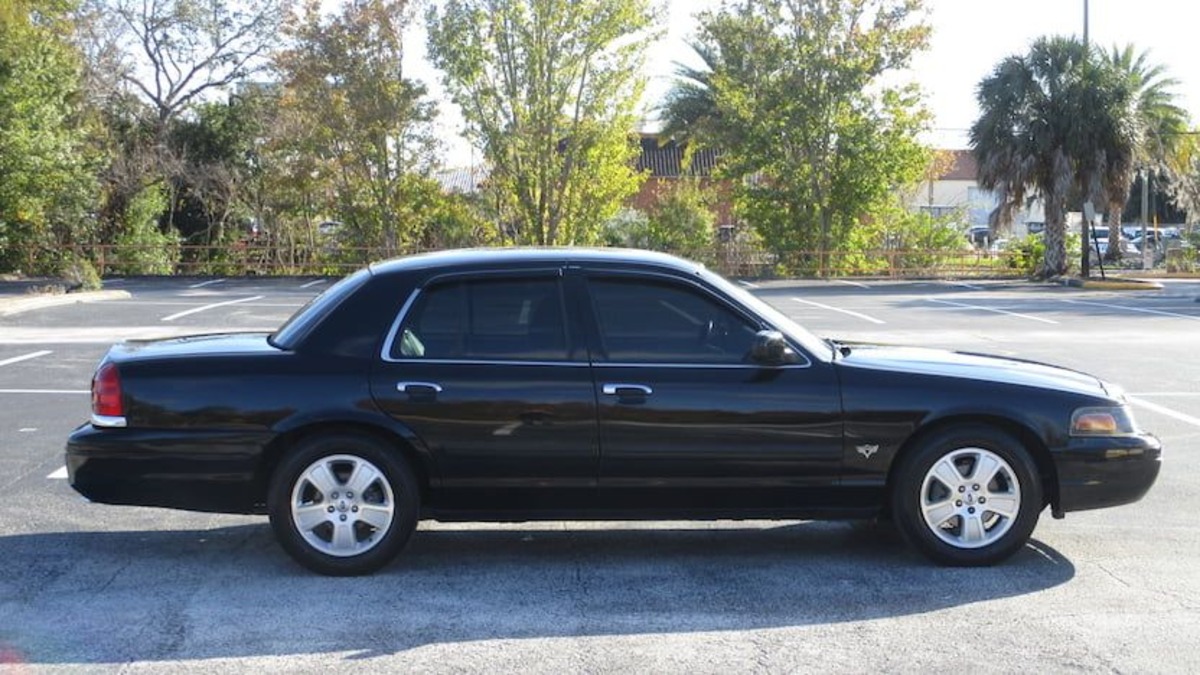When it comes to working on cars, whether as a seasoned mechanic or a DIY enthusiast, how the vehicle is laid out under the hood can either be a blessing or a nightmare. Vehicle design varies dramatically from one model to another, not just in appearance and performance, but in how serviceable the parts are.
While some cars are built with accessibility in mind, making it easy to reach key components like spark plugs, batteries, alternators, and oil filters, others are constructed in ways that seem to actively work against anyone trying to do their own maintenance.
In many cases, automakers balance style, performance, safety, and space efficiency when designing vehicles. Unfortunately, ease of maintenance is often an afterthought. Some modern cars require the removal of bumpers, engine mounts, or half the front end just to access a small component, turning what should be a 15-minute job into a several-hour ordeal. These designs are particularly frustrating not only for owners but even for professional mechanics who see their labor times stretched unnecessarily.
Conversely, some cars are practically a joy to work on. These vehicles often feature thoughtful layouts, with open engine bays and logically placed components.
Whether it’s an older model designed before engine bays got crammed with tech or a newer vehicle with modular, user-friendly designs, these cars earn praise for their repairability and accessibility.
This article takes a look at both ends of the spectrum. We’ll start by highlighting five cars known for their accessible parts and ease of maintenance, a dream for anyone with a wrench. Then we’ll delve into five cars infamous for their nightmare layouts, vehicles that can make even routine maintenance a dread-inducing task.
While this is by no means an exhaustive list, it reflects common experiences from mechanics, DIYers, and car enthusiasts who know the satisfaction or frustration of getting under the hood.
Also Read: 5 Cars That Have Clean Titles at 200K Miles and 5 That Hide Lemon History
5 Cars with Accessible Parts (Mechanic-Friendly Layouts)
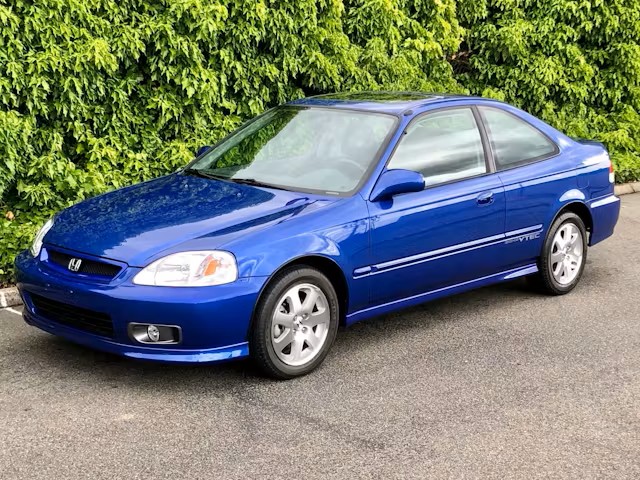
1. Honda Civic (1990s–2000s Models)
Honda Civics from the 1990s through the early 2000s remain a gold standard for reliability and ease of maintenance. These models are revered not just for their fuel efficiency and longevity, but also for their elegant simplicity under the hood. The engine bay layout is clean and intuitive, especially for the D-series and B-series engines.
Spark plugs are located right at the top, coil packs are accessible without removing excessive plastic shrouding, and the intake and exhaust manifolds are easily distinguishable and separated.
This makes performing routine tasks like valve cover gasket replacements, ignition timing adjustments, and even engine swaps relatively simple compared to other compact cars in their class.
The transverse engine design, coupled with front-wheel drive, may seem like a potential space-saver that would cause congestion under the hood. However, Honda cleverly engineered these cars to leave enough room for the user to reach all essential components.
Timing belts, alternators, and power steering pumps are mounted in ways that make visual identification and access easy, even for those with only basic mechanical skills. What’s more, the oil filter location on most models is straightforward—placed in a spot that minimizes oil spillage, a small but thoughtful detail that experienced car owners quickly appreciate.
Another area where the Civic shines is modularity and platform sharing. Many components from these generations are interchangeable not only across Civic trims but also with other Honda models such as the Accord, Integra, and CR-V.
This cross-compatibility significantly lowers the cost of ownership, as finding replacements—whether OEM or aftermarket—is easier and cheaper. The vast availability of parts also makes diagnosing and addressing issues less intimidating, with common fixes well-documented and standardized across the brand.
Finally, the Civic benefits immensely from an engaged and knowledgeable community. For virtually every problem you encounter, someone else has already posted a detailed, step-by-step guide or video. This level of support transforms the Civic from just a good commuter car into a fantastic learning tool for those interested in automotive repair.
Whether you’re adjusting valve lash, bleeding brakes, or even installing performance parts, the process is straightforward, and you rarely need to consult a dealership or specialty mechanic.
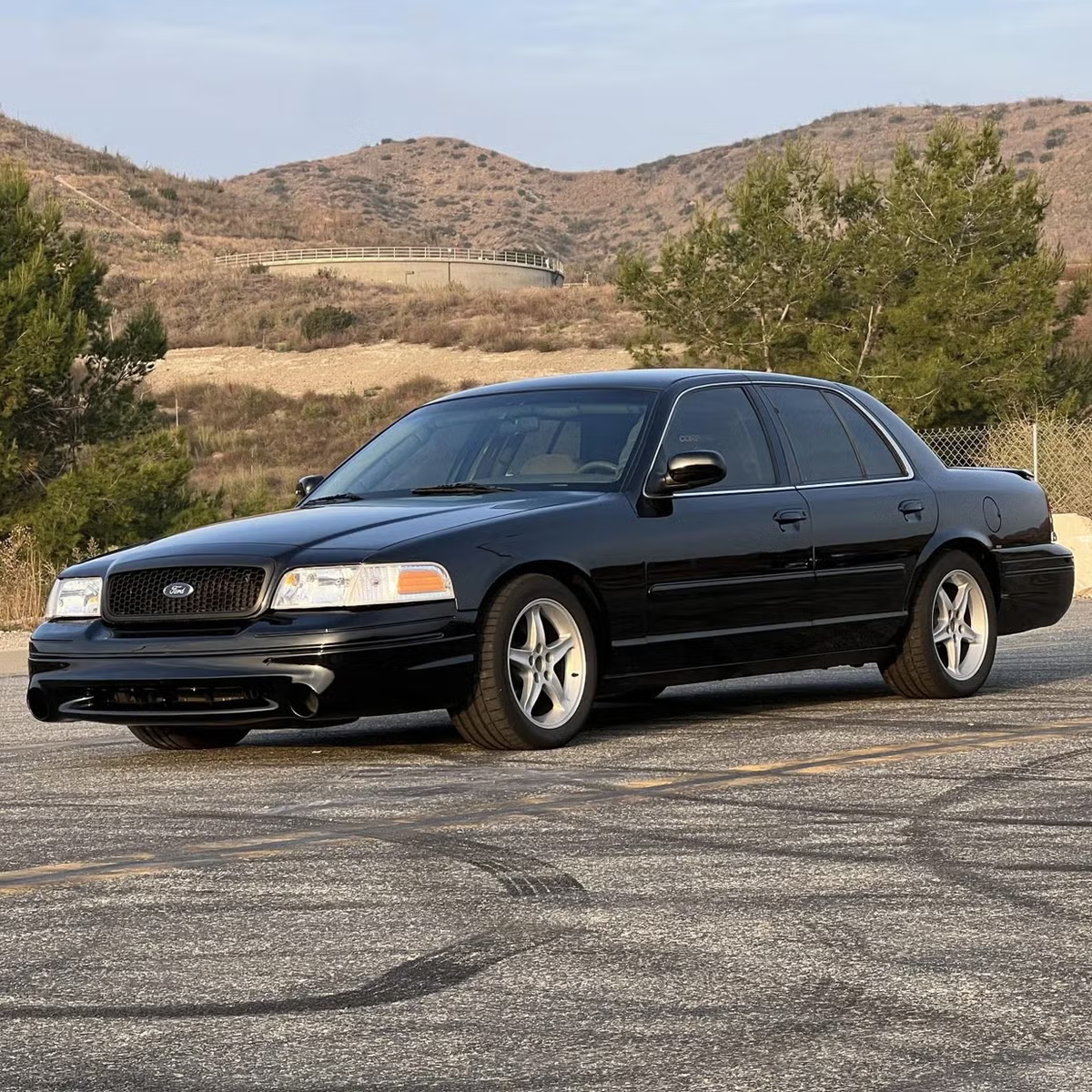
2. Ford Crown Victoria (1992–2011)
The Ford Crown Victoria—especially models used in police fleets or taxis—is a mechanical workhorse with a layout that feels like it was designed with technicians in mind.
Built on the long-running Panther platform, this body-on-frame vehicle features a front-engine, rear-wheel-drive layout that provides an incredible amount of space in the engine bay.
Whether you’re working on the 4.6L Modular V8 engine or dealing with suspension repairs, there’s generous clearance on all sides of the vehicle, reducing the time and complexity of virtually any repair task.
One of the major advantages of this car is the location and simplicity of key engine components. The alternator is right at the front of the engine, easily reachable without any special tools. Spark plugs are well-spaced and accessible, even for those with larger hands, and the coil-on-plug ignition system can be serviced without removing any obstructing parts.
Unlike many modern vehicles that bury components under layers of covers and brackets, the Crown Vic’s layout is honest and transparent. Want to change the belt, thermostat, or water pump? You can do it without taking apart half the engine bay.
The drivetrain of the Crown Vic is equally user-friendly. The transmission is a conventional 4-speed automatic, easy to drop and service. Driveshaft removal, differential service, and rear axle work are simple due to the solid axle design and generous underbody clearance.
The front suspension uses double wishbones that are sturdy and straightforward, with bushings, ball joints, and control arms all accessible without major effort. This is one reason why police departments kept these cars running well past 200,000 miles—repairs were cheap and efficient.
Lastly, the aftermarket for Crown Victorias is substantial, especially in the used market. Because of their widespread use in fleets, there’s a massive supply of donor vehicles and surplus parts. It’s not uncommon to find full assemblies—steering racks, fuel pumps, brake calipers—for a fraction of the cost you’d pay on a less common vehicle.
If you’re looking for a full-sized sedan that you can confidently maintain or modify yourself, the Crown Vic offers one of the most accessible mechanical designs of any car in its category.
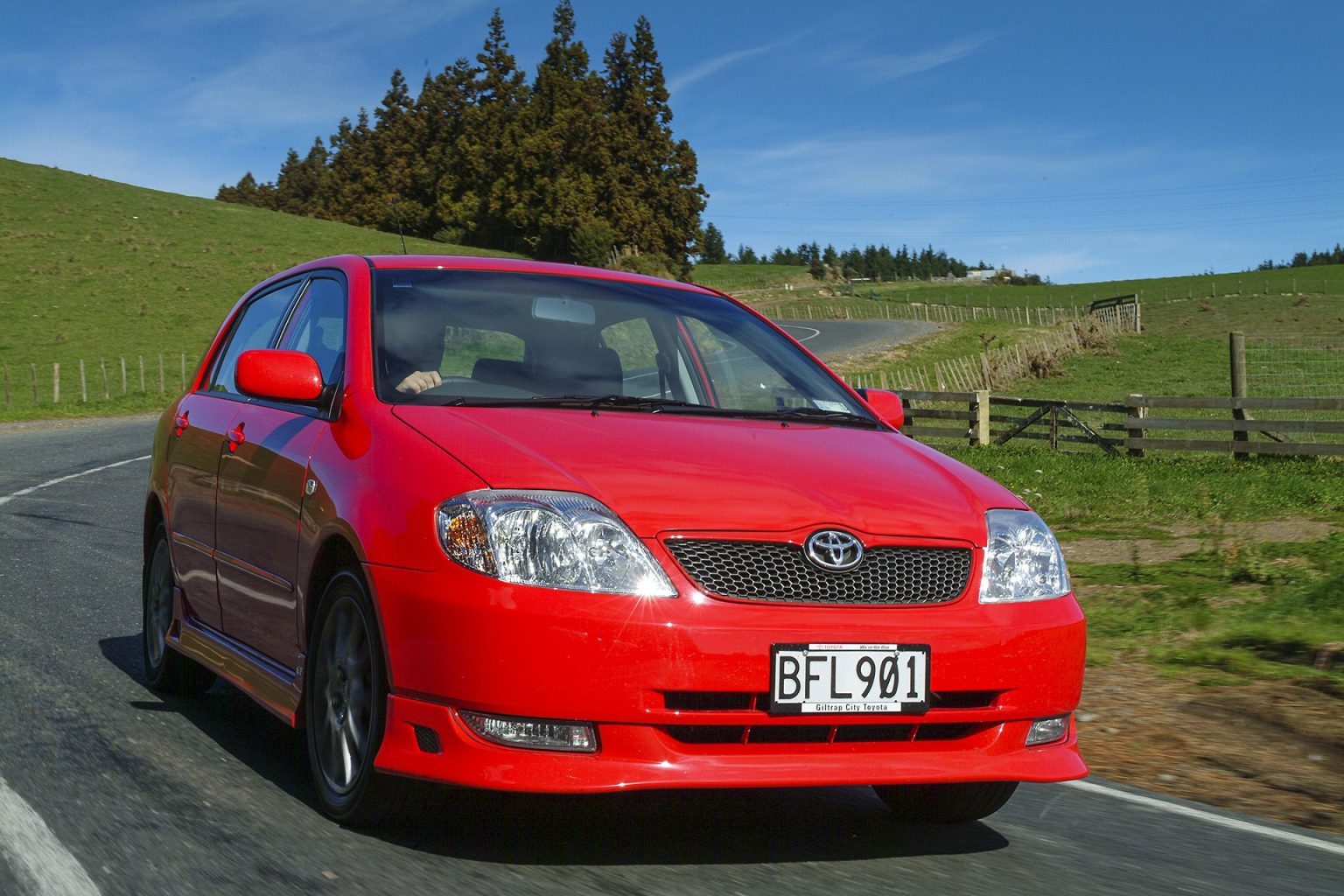
3. Toyota Corolla (2000s Era)
Toyota’s early-2000s Corolla models have long been favored for their durability, fuel efficiency, and understated engineering excellence, but beneath the hood lies another virtue: mechanical accessibility. The 1.8L 1ZZ-FE engine found in many of these models is a prime example of balanced engineering.
It delivers sufficient power for daily driving while offering a layout that is clear, efficient, and friendly to both novice and professional mechanics. The most commonly serviced components—alternator, battery, oil filter, and spark plugs—are all right there, easy to spot and even easier to replace.
The cylinder head design is especially appreciated by DIYers, as it puts the spark plugs and ignition coils directly on top with no extra covers or awkward connectors. Valve adjustments are infrequent but straightforward if needed. The intake and throttle body sit at the top of the engine bay with a layout that allows cleaning and servicing with minimal disassembly.
Even emissions-related components, like the EGR valve and PCV system, are laid out logically, and vacuum lines are clearly labeled or color-coded in some models, reducing diagnostic guesswork.
Additionally, the Corolla’s suspension and braking systems are simple yet effective. The front MacPherson struts and rear torsion beam suspension allow for fast and uncomplicated part replacements. Brake pads, rotors, and calipers are easily reached and don’t require exotic tools or extensive experience to replace.
The wheel wells offer decent room to work, so you won’t be spending extra time fighting tight spaces or dealing with rusted bolts in awkward positions. Even something like replacing the fuel filter, which can be a pain in modern cars, is relatively painless in this era of the Corolla.
Toyota’s reputation for build quality extends to how the parts fit together, meaning bolts come off the way they’re supposed to, clips don’t break with minimal force, and fasteners are intelligently placed.
Combined with the global availability of OEM and aftermarket parts and a community of Toyota enthusiasts who routinely post repair walkthroughs and guides, the Corolla proves that ease of use isn’t just for luxury vehicles. It’s a car designed for the real world—one where people do their oil changes and troubleshoot their check engine lights.

4. Jeep Wrangler (TJ and Early JK Models)
The Jeep Wrangler, especially the TJ (1997–2006) and early JK (2007–2011) models, is a mechanic’s playground. Built with modularity and ruggedness in mind, the Wrangler’s design philosophy caters to accessibility and off-road survivability, which conveniently results in easier maintenance and repair.
The hallmark of Wrangler ownership is its community-driven culture, where mechanical tinkering is part of the experience. Jeep engineers understood this, and it shows in the thoughtful, straightforward layout of mechanical components.
Starting with the engine bay, the 4.0L inline-six found in TJ Wranglers is famously durable and shockingly easy to work on. Its layout is simple: coil packs or distributor systems are accessible without contorting your hand or removing unrelated parts.
Belts, hoses, the alternator, and air conditioning components are all in plain sight and can be swapped using basic hand tools. Even the oil filter, often a sore spot in modern vehicles, is easy to reach from under the car without removing any skid plates or guards.
Beyond the engine, the Wrangler’s body-on-frame construction and solid axles make suspension work a breeze. Need to replace a control arm, shock, or sway bar link? You can do it in your driveway with basic tools and minimal jacking.
The exposed undercarriage and wide wheel wells mean you have ample space to navigate even more involved tasks. Plus, thanks to Jeep’s design legacy, many components are bolt-on and share interchangeability across model years and trims.
One of the most striking features of the Wrangler is its adaptability. Not only are many parts accessible, but they’re also designed to be removed and replaced frequently. Doors, fenders, roofs, and even the dashboard can be disassembled without destructive effort.
This lends itself well not just to maintenance but also to customization, with countless aftermarket options for almost every component of the vehicle. The Wrangler isn’t just easy to work on—it’s built with the assumption that you will work on it.
In sum, the Wrangler is one of those rare vehicles that encourages mechanical interaction. From oil changes to engine swaps and axle rebuilds, it’s a vehicle that practically invites you to get your hands dirty. Whether you’re fixing a leaky rear main seal or installing a lift kit, you’ll find that the process, while potentially involved, is never needlessly complex. It’s this ethos of accessibility and user-friendliness that makes the Wrangler a favorite not only among off-roaders but anyone who enjoys taking care of their vehicle.

5. Subaru Outback (Early 2000s Models)
The early 2000s Subaru Outback, particularly those equipped with the 2.5L EJ25 engine, is a somewhat surprising entry in the list of cars with accessible components. While Subaru’s boxer engine layout does introduce some unique spatial challenges compared to inline or V-shaped engines, these particular Outback models strike a commendable balance between performance and serviceability.
Owners and mechanics alike often praise these vehicles for being refreshingly simple to maintain in key areas, especially when considering their standard all-wheel-drive system and rugged capability. For a car offering practicality and real-world versatility, it remains remarkably straightforward to work on.
Under the hood, the horizontally opposed four-cylinder engine sits lower in the engine bay, which improves handling and vehicle balance but also keeps many components conveniently within reach. Spark plugs, for example, are accessible from the wheel wells with a bit of maneuvering—not ideal, but manageable with simple tools.
Unlike many modern engines where coils or plug wires are buried beneath intake manifolds, Subaru’s setup requires no such gymnastics. Replacing alternators, radiators, belts, and the throttle body is similarly approachable, thanks to an open engine layout and routed wiring.
The timing belt, a critical maintenance item on these models, is also relatively easy to service. It’s located at the front of the engine and can be replaced without pulling the motor—a rarity among all-wheel-drive vehicles with boxer engines.
Subaru’s AWD drivetrain may sound complex, but its mechanical simplicity is part of the reason these vehicles are so durable. The symmetrical all-wheel-drive system doesn’t require an overly complicated transfer case or excessive electronic components to function.
The driveshaft and differential systems are laid out cleanly, and critical parts such as axles, CV joints, and wheel bearings can be serviced with standard garage equipment. Unlike many modern AWD systems, where space constraints and design quirks turn even minor repairs into multi-hour jobs, the early Outback makes these tasks refreshingly simple.
This is particularly important for DIYers in colder climates, where worn-out suspension bushings, rusted exhausts, and cracked boots are common repair items.
Beyond the drivetrain, the vehicle’s suspension and brake systems are also constructed with user-friendliness in mind. The MacPherson front struts and multilink rear suspension are solid and uncomplicated. Replacing struts, bushings, or control arms involves removing a few bolts and applying basic alignment afterward—no high-end tools or advanced calibration needed.
Brake pads and rotors are similarly straightforward, with single-piston calipers and no electronic parking brakes to complicate things. Subaru even positioned the fuel filter in a spot that’s relatively easy to access, and the exhaust system is designed with accessible hangers and flanges that resist the usual corrosion nightmares found in cars from the same era.
One of the biggest bonuses for those maintaining a Subaru Outback is the overwhelming community and documentation support. The EJ25 engine family has been used in everything from Imprezas to Foresters, meaning there’s a massive user base and tons of technical data, repair manuals, and forum support available online. You’ll find dedicated Subaru subforums, Reddit threads, and step-by-step videos covering everything from adjusting valve clearances to replacing head gaskets.
That last job—head gasket replacement—is a known issue for the EJ25, but it’s worth noting that even this complex-sounding repair can be tackled by a knowledgeable DIYer with a clean garage and a bit of patience, thanks to the accessibility of the engine once it’s removed. It’s this dual nature—some complexity paired with thoughtful design—that makes the Outback both a reliable daily driver and a realistic DIY maintenance project.
5 Cars with Nightmare Layouts (Mechanic’s Headache)
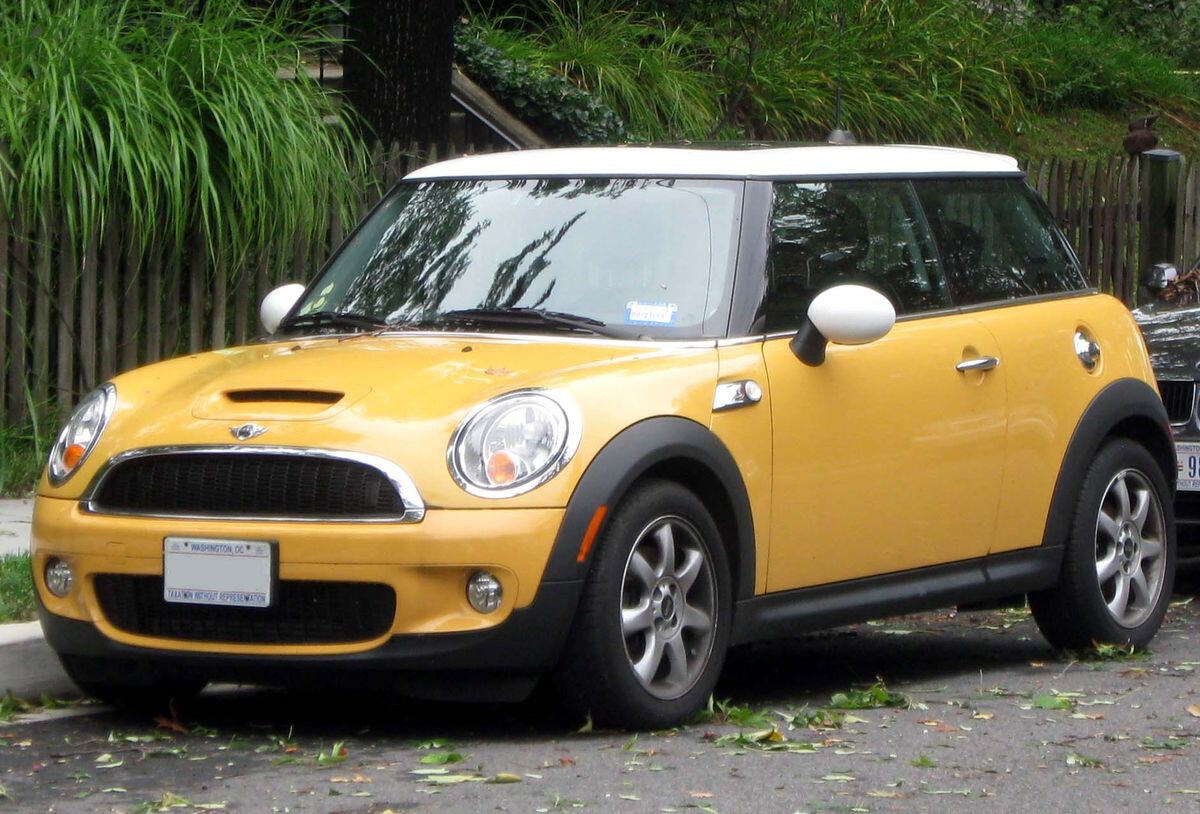
1. Mini Cooper (2000s–2010s Models)
The Mini Cooper, particularly the models produced under BMW’s stewardship from the early 2000s through the 2010s, presents one of the most infamously frustrating experiences for those tasked with repairs. Despite its small footprint and sporty charm, the Mini’s engine bay is a densely packed nightmare of European overengineering.
With the transverse-mounted engine crammed tightly into a compact front end, even routine maintenance can feel like solving a 3D puzzle with missing pieces. Tasks that should take 20 minutes on another car, such as changing spark plugs or replacing a thermostat, can balloon into multi-hour jobs requiring the removal of unrelated components just to gain access.
One of the most glaring issues with the Mini Cooper’s design is how much needs to be disassembled to perform basic service. In many models, removing the air intake system, coolant reservoir, and engine covers is required just to reach the oil filter or PCV valve.
On turbocharged Cooper S models, things are even worse: turbo placement is practically unreachable without jacking up the vehicle and removing significant components like the heat shield, exhaust piping, and sometimes even the engine mount. Want to replace the clutch or timing chain? Prepare to pull the engine entirely or remove the subframe—a labor-intensive process that adds major cost and time.
Furthermore, the electronics and sensors in these vehicles are needlessly complex and packed with proprietary components. Electrical issues are common, and many of the connections are located in inconvenient, hidden locations that require partial dashboard removal or snaking tools into tight crevices.
Diagnostic scanning often requires BMW-specific tools, meaning a generic OBD-II reader won’t be enough for a proper diagnosis. The BCM (Body Control Module), located under the dash near the floor, is notorious for water damage and costly replacement, adding another layer of grief for owners.
And then there’s the cost factor. Not only are many of the components hard to reach, but they’re also expensive. BMW-branded replacement parts carry a premium, and aftermarket options are limited due to the complexity of Mini’s engineering.
Coupled with high labor costs from the extensive disassembly required, the Mini Cooper’s maintenance reputation has earned it a permanent spot on lists of vehicles mechanics dread. It’s a car designed more for aesthetic appeal and European flair than for long-term ownership ease, and owners often discover this after their warranty has expired.

2. Chrysler PT Cruiser
The Chrysler PT Cruiser may evoke nostalgic memories with its retro-inspired styling, but under the hood lies one of the most poorly thought-out engine compartments in the compact car segment. Chrysler’s attempt to blend utility with quirky aesthetics came at a major cost to serviceability. Despite being a relatively large vehicle for its class, the PT Cruiser’s engine bay is cramped and awkwardly organized, making even the most basic maintenance tasks feel like a battle against poor engineering decisions.
The placement of the battery is a prime example of this frustration. Unlike most vehicles, where the battery is placed near the front of the engine bay for easy access, the PT Cruiser’s battery is tucked beneath the air intake and other surrounding components, requiring the removal of several parts just to check voltage or perform a jump-start.
This is an inconvenience at best and a safety risk at worst, especially in emergencies. Additionally, the alternator is mounted low and towards the rear of the engine, requiring the vehicle to be lifted and multiple mounts or supports to be removed to access it. What should be a simple swap becomes an hours-long procedure.
Turbocharged versions of the PT Cruiser take the difficulty up a notch. In these models, the turbo is wedged into a nearly inaccessible part of the engine bay, sandwiched between the engine block and the firewall. Heat management is poor, and surrounding components are prone to cracking or leaking due to the excessive temperatures.
If the turbo needs replacement, which it often does due to oil line issues, be prepared for a full day of labor just to get to the part. The cooling system, with its maze of hoses and sensors, is equally difficult to navigate, with poorly labeled components and hard-to-reach clamps that frustrate even professional mechanics.
Beyond the mechanical layout, the PT Cruiser also suffers from a series of reliability issues that make maintenance more frequent and more painful. Electrical gremlins are common, including failing sensors, flickering instrument clusters, and problematic body control modules.
The suspension, especially in earlier models, wears out quickly and often requires replacement of control arms, bushings, and mounts that are surprisingly difficult to access. The PT Cruiser is a case study in how design focused on appearance can go disastrously wrong when real-world usability is ignored.
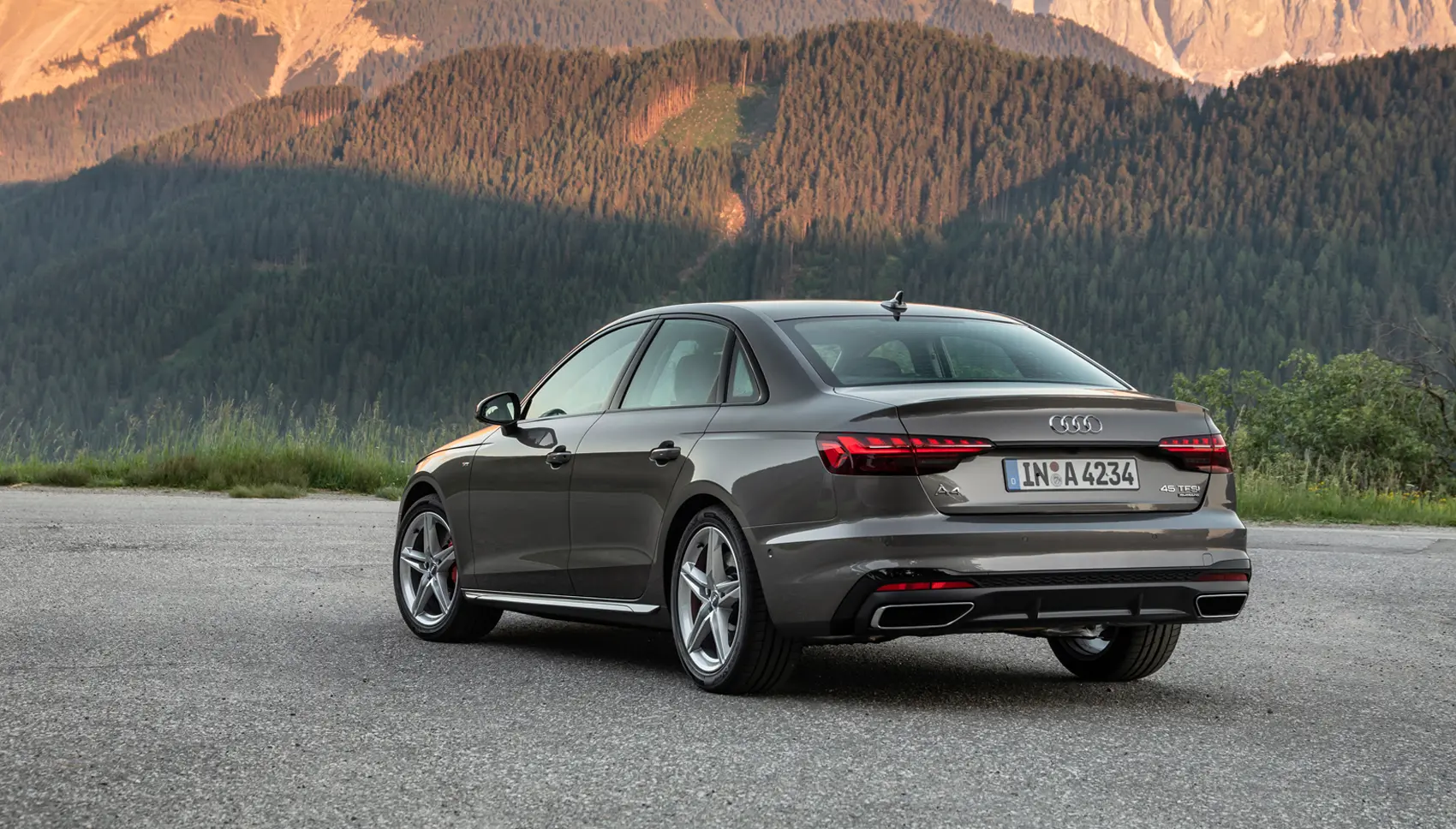
3. Audi A4 (B6/B7 Generations, 2001–2008)
Audi is known for blending luxury and performance, but for mechanics, the B6 and B7 generation A4 models are a masterclass in how premium design can compromise serviceability.
The compact luxury sedan, while comfortable and refined on the inside, conceals a horrifically overengineered and cramped engine bay that turns even basic maintenance into a time-consuming affair. From electrical issues to timing belt jobs, the Audi A4 of this era is a high-maintenance vehicle that rarely gives mechanics a break.
Perhaps the most infamous issue is the “service position” requirement for many engine repairs. To change the timing belt or water pump on the A4, you typically need to remove the front bumper, radiator, and fan assembly just to slide the front of the engine forward a few inches.
This “service position” adds significant time and complexity to jobs that are relatively simple on other vehicles. Worse yet, this isn’t limited to major repairs—even accessing accessory drive components or resolving oil leaks can require partially disassembling the front end.
Another challenge is the turbocharged 1.8T and 2.0T engines used in these models. The turbo units are crammed into tight corners, surrounded by vacuum lines, electrical connectors, and fragile plastic components that become brittle over time. The PCV system, notorious for failures, is difficult to reach and replace due to its buried location.
Oil leaks from valve covers, cam chain tensioners, and vacuum pumps are common and messy, and because many of these components are interlinked with sensors and ECU inputs, replacing one often means disturbing several others.
Electronics also pose serious issues. The A4 is loaded with control modules that govern everything from headlights to climate control. These modules are not only prone to failure but are also difficult to access and often require software coding after replacement.
The CAN-BUS electrical system, while efficient in theory, becomes a nightmare when diagnosing faults. Audi uses proprietary connectors and modules that require expensive, dealership-level scan tools to diagnose and program. Even tasks like changing brake pads can require software resets for electronic parking brakes, making DIY work difficult or impossible without specialized tools.
Finally, even interior and body repairs on the A4 can be more complex than necessary. HVAC issues often involve complete dashboard disassembly to access blower motors or actuators. Simple bulb replacements may require wheel removal and fender liner access.
Altogether, the Audi A4 B6/B7 generation is a shining example of how luxury engineering often fails to consider the long-term needs of those who will inevitably need to maintain it. The car might be a joy to drive—but for mechanics, it’s often a long, expensive road filled with unnecessary obstacles.
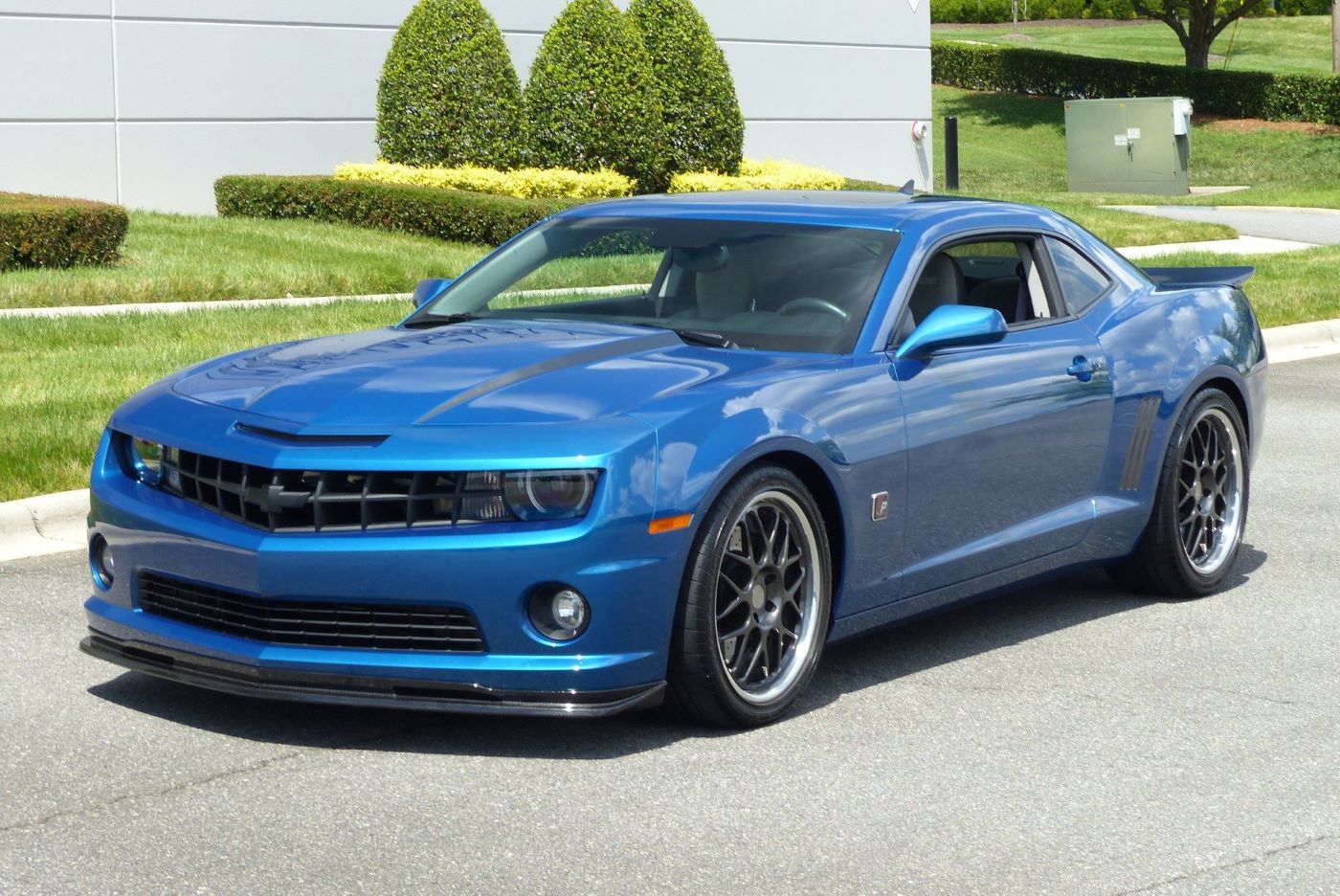
4. Chevrolet Camaro (2010–2015 Models)
The fifth-generation Chevrolet Camaro brought muscle car aesthetics roaring back into the mainstream, but what it offered in street presence and horsepower, it sorely lacked in serviceability. These Camaros are prime examples of form over function.
Designed with a low, aggressive front end and bulky proportions, they’re great to look at but an absolute nightmare to work on. The cramped engine bay and tight undercarriage clearance mean that virtually every job, no matter how minor, requires extra time, special tools, or outright removal of entire vehicle assemblies.
The V8 models, especially those equipped with the LS3 engine, are the worst offenders. Changing the spark plugs, for instance, requires removing engine mounts or lifting the engine in certain cases just to reach the plugs near the firewall. Even the air conditioning compressor or oil pan gasket requires dropping crossmembers or navigating around tightly packed components.
Routine maintenance tasks such as oil changes are more difficult than they should be, as the oil filter is located in a hard-to-reach position beneath skid plates and subframe members, requiring the vehicle to be lifted and partially disassembled.
The Camaro’s battery placement adds another layer of inconvenience. Rather than being located under the hood, the battery is situated in the trunk behind a side panel, requiring trim removal and often complicating jump-starting or battery replacements.
On models equipped with powerful stereo systems or electronic modules, this awkward battery placement often contributes to electrical faults and makes diagnostics harder than necessary. The same goes for the fuse box, which is crammed into a tight space with little room for maneuvering during testing or component swaps.
Visibility issues and interior disassembly further worsen the ownership experience. Due to the Camaro’s low roofline and tall beltline, even changing interior bulbs or accessing HVAC components can involve tight reaches and broken plastic clips.
Dashboard disassembly is cumbersome, with poorly routed wiring harnesses and components like blend door actuators buried deep within the system. While the Camaro may dominate drag strips and draw admiring stares at car shows, it’s one of the least enjoyable modern vehicles to service, making it a true headache for DIYers and professionals alike.

5. Mercedes-Benz ML350 (2006–2011, W164 Generation)
The second-generation Mercedes-Benz ML350, part of the W164 platform, is a classic example of luxury gone awry when it comes to serviceability. Marketed as a premium mid-size SUV, it promised sophistication, comfort, and performance—but beneath that polished veneer lies a tangled, inaccessible mess of components that often turn routine maintenance into a demoralizing exercise in patience. While Mercedes vehicles are known for their engineering excellence, the ML350 proves that overengineering can sometimes be a mechanic’s worst enemy.
The engine bay in the ML350 is one of the first indicators of future frustration. With a transverse-mounted V6 engine wedged tightly between the shock towers and firewall, there’s virtually no room to maneuver tools. Spark plug changes—normally a basic job—require removing multiple covers, the airbox, and often the intake plenum.
In some models, the rear plugs are almost entirely obstructed by the firewall, making a job that should take 30 minutes stretch to several hours. Worse still, coolant leaks from the thermostat housing or water pump are common, but these components are buried under layers of hoses, brackets, and plastic shrouding that require substantial disassembly to even view, let alone repair.
The ML350 also suffers from a labyrinthine electrical system that seems to have been designed with zero consideration for long-term diagnostics. Control modules are scattered across the vehicle in obscure locations, with some hidden under floorboards or behind interior trim.
Many sensors, such as camshaft position sensors or oxygen sensors, are buried so deep within the engine bay that locating them without a service manual is next to impossible. Additionally, the wiring harnesses in the ML350 are prone to chafing and moisture intrusion, leading to hard-to-diagnose intermittent faults. When something goes wrong—and it often does—you’ll likely need Mercedes’ proprietary STAR diagnostic system just to begin troubleshooting.
Underneath the vehicle, the complexity continues. The W164 platform uses an AIRMATIC air suspension system that, while comfortable when working properly, is known for premature failure of struts, compressors, and control valves.
Replacing any of these parts is both expensive and labor-intensive, requiring specific calibration tools and a deep understanding of Mercedes suspension logic.
The drivetrain also features a transfer case and front differential that are tightly integrated and difficult to service. Fluid changes, bushing replacements, or driveshaft work all require extensive disassembly and, frequently, specialized tools.
The ML350’s interior doesn’t make life any easier. HVAC systems are buried beneath a thick dashboard structure that must be carefully dismantled to access blend doors, actuators, or the heater core.
Cabin air filter replacements involve removing panels and gloveboxes, with brittle plastic clips and multi-stage access points that rarely survive more than one service without breaking.
In short, the ML350 offers a luxury experience from the driver’s seat—but once you pop the hood or crawl underneath, it becomes clear that this SUV was not built for ease of ownership. It’s a vehicle that demands dealership dependency, specialized tools, and a tolerance for constant, expensive surprises.
Also Read: 5 Trucks That Survive Abuse and 5 That Break Down From Daily Use
The gap between vehicles designed with accessibility in mind and those that seem almost hostile to maintenance is wider than most consumers realize. On one end, you have models like the Honda Civic, Toyota Corolla, and Jeep Wrangler, which are thoughtfully laid out, reasonably modular, and supported by expansive DIY communities. These cars reflect an understanding that owners might want to perform their maintenance, or at the very least, that mechanics shouldn’t need to dismantle half the car for a simple repair.
Conversely, cars like the Mini Cooper, Audi A4, and Mercedes-Benz ML350 highlight what happens when styling, performance, or perceived luxury trumps serviceability. These vehicles often require the removal of bumpers, dashboards, or even engines just to reach routine components.
The frustration is compounded by expensive proprietary parts, limited documentation, and an increasing reliance on electronics that require specialized diagnostic equipment. While they may offer a superior driving experience in some respects, they often come at the cost of long-term ownership satisfaction.
From a mechanic’s perspective, cars that prioritize accessibility don’t just reduce repair times—they reduce risk. Every extra component removed is one more opportunity for something to break, misalign, or be reinstalled incorrectly.
Vehicles like the Ford Crown Victoria and Subaru Outback shine not only because they’re easier to repair, but because they reduce this cascade of potential failures. They respect the idea that maintenance should be predictable, affordable, and doable without a master’s degree in automotive engineering.
In a time when cars are increasingly complex, filled with technology, and designed for aesthetics more than longevity, accessible design is a form of respect for mechanics, for DIYers, and for anyone who believes a car should work with its owner, not against them.
Whether you’re buying your next daily driver or planning your next long-term project, keep this list in mind. The cars that respect your time in the garage are the ones that often give you the fewest headaches on the road.

